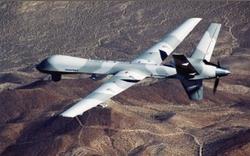Some Question Whether Predators Used By Police Are Legal,
Constitutional
A growing controversy surrounds the sudden use of unmanned
surveillance aircraft designed for the military against private
citizens in the US. The issues being raised include whether there
is an expectation of privacy on your own property if you can still
be seen from public airspace, and whether the use of drones
violates the Posse Comitatus Act or the Fourth Amendment of the US
Constitution.

The Los Angeles Times cites as an example a case in North Dakota
in which Nelson County Sheriff Kelly Janke obtained a search
warrant to look for missing cows on a family's farm in June. He
says he was chased off by three armed men, so he called in the help
of a Predator B drone operated by US Customs and Border Protection.
The first known arrests of US citizens made with the help of a
Predator came the following morning without further incident after
the suspects were located by the drone, and determined to be
unarmed.
The Posse Comitatus Act was passed in 1878 in response to abuses
by the Union Army during its occupation of southern states
following the Civil War. It blocks the use of the US Army and Air
Force in law enforcement roles on US soil without specific approval
by Congress. The US Navy and Marine Corps have similar restrictions
in their own internal policies. But National Guard units and
domestic law enforcement agencies such as Customs and Border Patrol
are not covered, and while Congress has been nervous about funding
spy drones for domestic use, there's no actual restriction on the
use of surveillance aircraft, manned or unmanned, by civilian law
enforcement.
The Fourth Amendment outlaws unreasonable searches and seizures,
and requires probable cause and judicial approval for search
warrants. But there is legal precedent established which holds that
if you are visible from the air, even in your own back yard, you
have no expectation of privacy.

On the other side of the argument, there is no question the US
reaction to the 9/11 attacks has resulted in popular sentiment and
Congressional action to shift priorities in the direction of law
enforcement and away from personal freedoms. Florida Republican
Congressman John Mica now openly ponders dismantling the TSA he
worked to create. The US Senate has authorized a suspension of the
protections in the Posse Comitatus Act for agencies spying on
suspected al Qaeda sympathizers in the US. But the idea that
unmanned aircraft could be routinely positioned where they are
unseen and unheard without a warrant is something many find
disconcerting.
Former Congresswoman Jane Harman, a California Democrat who once
chaired the House Homeland Security Intelligence Subcommittee, says
there needs to be a public discourse and creation of clear legal
authority before the implementation of civilian surveillance drones
becomes common. She tells the LA Times, "There is no question that
this could become something that people will regret."
The case of the five arrests on the Brossart family farm in June
may not turn out to be a good example of abuse of drone technology.
Sheriff Janke did have a warrant, the missing cows allegedly were
recovered there, and in explaining the benefits of the Predator
Janke tells the Times, "We don't have to go in guns blazing. We can
take our time and methodically plan out what our approach should
be."
 ANN's Daily Aero-Linx (05.02.24)
ANN's Daily Aero-Linx (05.02.24) ANN's Daily Aero-Term (05.02.24): Touchdown Zone Lighting
ANN's Daily Aero-Term (05.02.24): Touchdown Zone Lighting Aero-News: Quote of the Day (05.02.24)
Aero-News: Quote of the Day (05.02.24) ANN FAQ: Contributing To Aero-TV
ANN FAQ: Contributing To Aero-TV NTSB Final Report: Cirrus Design Corp SR20
NTSB Final Report: Cirrus Design Corp SR20




